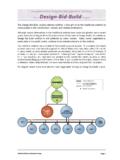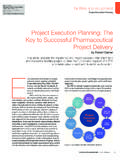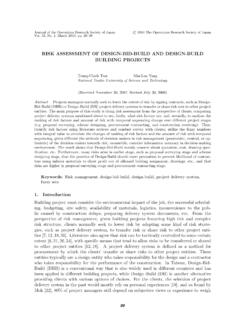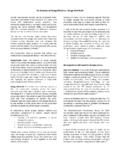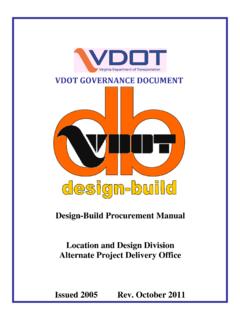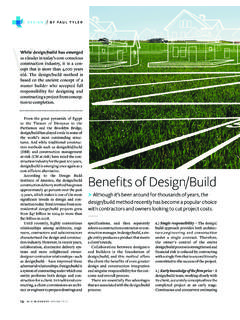Transcription of PROJECT DELIVERY HANDBOOK - ACCM
1 PROJECT . DELIVERY . HANDBOOK . Guide to California School and Community College Facility DELIVERY 2017. This version incorporates changes resulting from legislation including AB 2316 and SB 693 (2016). Association of California Construction Managers Updated January 17, 2017. Page Table of Contents HOW TO USE THIS HANDBOOK .. Chapter WHAT IS CONSTRUCTION MANAGEMENT?.. Chapter AGENCY CONSTRUCTION MANAGEMENT .. 10. A. 10. B. Enabling 10. C. Relationship of the 10. D. Points for Consideration .. 11. E. Simple Steps to 12. Chapter 13. A. 13. B. Enabling 13. C. Relationship of the 13. D. Points for Consideration.
2 14. E. Simple Steps to 15. Chapter 16. A. 16. B. Enabling 16. C. AB 566 Requirements K-12 16. D. Relationship of the 16. E. Points for Consideration .. 18. F. Simple Steps to 18. Chapter CONSTRUCTION MANAGEMENT MULTI-PRIME .. 20. A. 20. B. Enabling 20. C. Relationship of the 20. D. Points for Consideration .. 21. E. Simple Steps to 21. Chapter CONSTRUCTION MANAGER 23. A. 23. B. Enabling 23. C. Relationship of the 24. D. Points for Consideration .. 24. E. Simple Steps to 25. Chapter 27. A. 27. B. Enabling 27. C. Skilled Workforce Provisions K-12 Only .. 27. D. Relationship of the 28. E. Points for Consideration.
3 29. F. Simple Steps to 29. Chapter DEVELOPER BUILT .. 31. A. 31. B. Enabling 31. C. Relationship of the 31. D. Points for Consideration .. 32. E. Simple Steps to 32. Chapter OTHER PROCUREMENT 34. Chapter 10 SUMMARY .. 38. GLOSSARY OF 41. Association of California Construction Managers Updated January 17, 2017. Page PREFACE. All DELIVERY methods have advantages and disadvantages. Different projects can have different DELIVERY methods. What works best for you and your PROJECT should define the method, not vice versa. This HANDBOOK was produced by the Association of California Construction Managers (ACCM) for use by California school district and community college district staff and board members.
4 The ACCM HANDBOOK gives practical outline of services provided by construction managers and useful description of the various DELIVERY methods of educational facilities available to districts. While construction management services are utilized in variety of construction sectors, they are increasingly sought out by school and college administrators as way to ensure that trusted professionals are available to support staff resources. The members of ACCM are leaders in the field of managing educational facility construction. The ACCM HANDBOOK provides an independent resource for districts trying to choose from among the diverse PROJECT DELIVERY methods that are available.
5 The need for this HANDBOOK stems from ACCM's recognition that there is no single PROJECT DELIVERY method that meets all individual needs. Each of the contributing editors has preferred DELIVERY method. However, ACCM members recognize that the appropriate DELIVERY method for particular PROJECT will depend on variety of unique circumstances. This guide provides description of each DELIVERY method, advantages and disadvantages, reasons for selecting particular method, and simple steps to implement each method. In addition, the ACCM HANDBOOK provides PROJECT DELIVERY selection matrix that districts may use to compare and contrast individual DELIVERY methods and the requisite services construction manager can provide you given your particular district needs.
6 School districts using this HANDBOOK should understand that if school district is seeking, or plans to seek, state matching funds, they will have to meet the state prequalification requirements for prime contractors and mechanical, electrical, and plumbing subcontractors on projects exceeding $1 million. For Lease- Leaseback projects, more subcontractors are required to be prequalified and prequalification is required even if state funds will not be requested. We wish to extend our appreciation to the ACCM Board of Directors for their support and encouragement on this PROJECT . We especially wish to thank the Drafting Committee for their writing, reviewing and wrestling with what is an appropriate outline of education facility DELIVERY methods in California.
7 Those individuals who offered their time and perspective are: Paul Bonaccorsi WLC Construction Services Inc. Dick Cowan XL Construction Company Bob Kjome Roebbelen Contracting Ed Mierau Neff Construction Kris Meyer Ledesma Meyer Construction Company Inc. Association of California Construction Managers Updated January 17, 2017. Page PREFACE. Users of this HANDBOOK should remember that it is important to contact each of the State Agencies involved in the approval of education facilities early in the process. Each of these agencies is staffed by knowledgeable professionals who take pride in their contribution to building school facilities.
8 K-12 and community college districts should contact: Division of the State Architect (DSA), Department of General Services, State Architect School Facilities Planning Division, California Department of Education (CDE), Division Director College Finance and Facilities Planning Division, California Community Colleges Chancellor's Office (CCCCO), Assistant Vice Chancellor School Property Evaluation and Clean-Up Division, Department of Toxic Substances Control (DTSC), Division Chief K-12 districts should contact: Office of Public School Construction (OPSC), Executive Officer Community college districts should contact: College Finance and Facilities Planning Division, California Community Colleges Chancellor's Office (CCCCO), Assistant Vice Chancellor For contractor registration requirements and PWC 100 PROJECT registration requirements contact: Department of Industrial Relations (DIR).
9 Association of California Construction Managers Updated January 17, 2017. Page HOW TO USE THIS HANDBOOK . This ACCM PROJECT DELIVERY HANDBOOK provides tools for understanding what construction managers do (Chapters and 2), comparing DELIVERY methods (Chapters through 9), and selecting an appropriate DELIVERY method for specific PROJECT (Chapter 10). Comparing DELIVERY methods allows school district or community college district to analyze the resources and capabilities required and available to them on specific PROJECT . This analysis puts the district in position to achieve its facility construction goals on time and within budget.
10 This HANDBOOK encourages early analysis of risks and resources. It also recognizes that any DELIVERY method chosen will benefit from collaborative process. Even where the DELIVERY method itself may suggest potential partners ( Design-Bid-Build, Design-Build, Lease-Leaseback, Piggyback Contracts, Developer Built Projects), retention of construction manager to act as the district's agent can ensure pre- construction collaboration among the owner, the architect and construction professional. There is no one perfect DELIVERY method for every situation. Just as each PROJECT has number of common elements along with specific unique challenges, each DELIVERY method also offers the user advantages and comes with some disadvantages.
